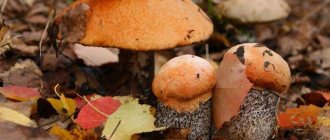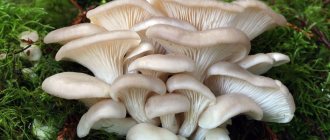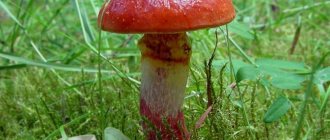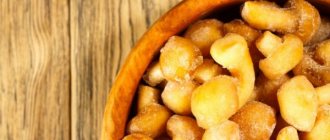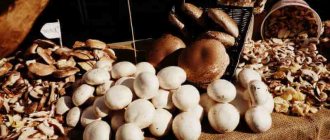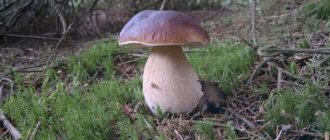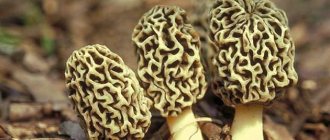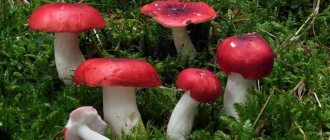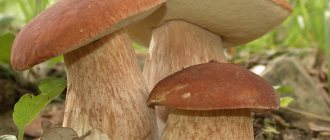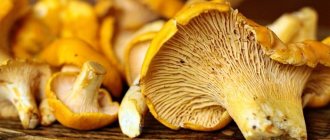Mushrooms
0
2449
Article rating
Kira Stoletova
Mushrooms in the Voronezh region are distinguished by their productivity. Collecting them is an extremely popular activity among locals and visitors. You can go along a simple route and collect a basket of delicious gifts from the forest, which will be representatives of the kingdom of Mushrooms, if you know where and what to look for.
Map of mushrooms of the Voronezh region
How climate affects mushroom growth
The region is located in the southeast of the country. There are relatively hot summers and moderately cold winters. This creates favorable conditions for fungal growth. The mushroom picker is attracted by the abundance of water bodies and forest plantations near them. There are also many swampy places where trophies are also looked for. The map for collecting mushrooms in the Voronezh region covers different types of forests, shelter belts, and meadows. Depending on the chosen terrain, you should expect a typical set of trophies.
Some are more likely to be found in wet, swampy soil, while others are more likely to be found in deciduous forests or on sand in a pine forest. In order not to make a mistake with the place, be sure to find out in advance about the types of soil and types of fruits. The map of mushroom places in the city of Voronezh itself leaves much to be desired. Within the city limits, it is not recommended to collect even edible species: poisoning with toxic substances from the mycelium of the fruit cannot be avoided. But there are many excellent mushroom places in the region.
Collecting honey mushrooms, what do you need to know?
In order to collect a good catch, not get lost and bring maximum benefit to your health, you should take care not only of the attributes necessary for collecting mushrooms, but also clothing, coordinates and a light snack.
The list of everything you need includes:
- baskets or buckets for collecting honey mushrooms (bags can be used as an alternative, but then the mushrooms may become wrinkled);
- knife for cutting legs;
- household gloves to avoid getting your hands dirty;
- closed clothing that protects against scratches, mosquito bites, ticks and snakes. The best option would be a set such as: a turtleneck, high-quality denim jeans, an insulated jacket in cool weather, rubber boots, a hat or cap;
- spray or bracelet against ticks and mosquitoes;
- warm tea in a thermos;
- sandwiches as a snack.
Honey mushrooms in Voronezh and the Voronezh region in 2021 were born in large numbers. If you have free time, the ability to distinguish edible mushrooms from false ones and the presence of a mushroom map, there will be no problems during collection.
What mushrooms grow in the Voronezh region
Types of edible mushrooms in the Voronezh region growing in summer:
- Chanterelles.
- Honey mushrooms.
- Butter.
- Porcini mushrooms, boletus mushrooms.
- Rows.
- Greenbacks.
- Boletuses.
- Boletus mushrooms.
- Russula.
Not all of the listed species are present in summer or spring. This kind of hunting is for experienced mushroom pickers: they know proven places. It is better for beginners to pick mushrooms in the fall: then you definitely won’t be able to leave empty-handed.
Interesting read: Where can you profitably sell excess mushrooms and berries?
Autumn mushrooms of the Voronezh region:
- Butter.
- Chanterelles.
- Boletuses.
- Boletus mushrooms.
- Russula.
- Row.
- White mushrooms.
The above species are classified as early autumn. The period of their active growth is from the second half of August to the end of September. Some species are found even before the first frost.
Mushroom places in the Voronezh region.
Mushroom places
You can find honey mushrooms even in parks and on city streets. But environmentalists do not recommend harvesting in such areas. Due to soil and air pollution, even edible species of mushrooms can harm the body.
- It is best to look for honey mushrooms in forest areas. As an option, a forest belt located behind City Park Grad. In 2021 there are a lot of Assumption honey mushrooms, as well as mushrooms, moss mushrooms and oyster mushrooms.
- Another place where honey mushrooms grow is the Grafsky Nature Reserve. True, if in past years there were many mushroom pickers there, now many are afraid of fines and avoid the place.
- Alekseevsky forest can please you with pine and spruce mushrooms. And if they are not there, competition may include: greenfinches, rowers, boletus, moss mushrooms, hygrophores.
- In Novaya Usman you can find honey mushrooms near the river.
- No less popular places are: Medovka, the burnt forest near hospital No. 8, Maslovka and the surrounding areas, Podgornoye, Malyshevo.
Where mushrooms grow in the Voronezh region
Last year 2012 pleased us with a huge harvest of mushrooms. This year is not so generous in this regard, but there are still mushrooms in the Voronezh region, the main thing is to know where to look for them. Many mushroom pickers wonder: where are the most mushroom places in the Voronezh region? Let's try to figure it out and answer this question.
Saffron milk caps are loved by most people. Together with porcini mushrooms, they belong to the highest category in terms of their taste, aroma and nutritional qualities. There are pine and spruce saffron milk caps. In the Voronezh region there are practically no spruce forests, so pine mushroom is common here. This wonderful mushroom grows in pine forests. It especially prefers pine forests that are about 20 years old.
In such a forest the saffron milk cap feels great. Pine trees of various ages, including 20-year-old ones, are planted along the pine forest terraces of the Don, Voronezh and other rivers of the region. This is where you need to look for this wonderful mushroom.
Butterflies love to grow in the same place as saffron milk caps - that is, in fairly young pine forests in which the height of the trees is about 10-15 meters. There is a logical explanation for this. It is in such forests that optimal lighting and temperature conditions are created for the development of mycelium.
In such a forest, unlike higher pine forests, it is gloomy; the grasses here do not have enough light, and they do not interfere with the development of the mycelium. In very young pine forests with small pines, the mycelium of saffron milk caps, boletus and other mushrooms simply did not have enough time to develop well.
Mushroom picking season in Voronezh.
In addition to saffron milk caps and butterflies, various rowers and greenfinches thrive in wonderful young pine forests. However, caution should be exercised: both rowers and greenfinch are conditionally edible mushrooms that require special preparation and limited consumption.
The porcini mushroom is truly the king of mushrooms. This mushroom, remarkable in its beauty, taste and aroma, is the ultimate desire for most mushroom pickers. In the Voronezh region, the oak form of the porcini mushroom is usually found. It has a brown cap with a grayish tint. Found in oak forests from June to October. In the Voronezh region, these are mountain oak forests on the high right banks of rivers, primarily the Shipov Forest, which lies on the right bank of the Osered. The porcini mushroom is also found in ravine oak forests covering the slopes of ravines and gullies. In floodplain oak forests that are flooded during spring floods, the white mushroom does not grow.
Interesting read: Red trellis: an unusual and very beautiful mushroom that is better not to pick.
Where can you collect honey mushrooms in Voronezh and the region?
To know where honey mushrooms grow in the Voronezh region, you need to have an idea where the forests are. For example, the best preserved forests are on the terraces of Voronezh - Usmansky Bor and Khopersky Reserve. Honey mushrooms in the Voronezh region are best collected in these territories, especially there are a lot of autumn mushrooms here. Autumn honey mushrooms in Voronezh begin to bear fruit from the end of August and continue until mid-October.
These mushrooms are considered one of the most popular among lovers of “silent hunting”. After all, you can collect several buckets of them in one place. These fruiting bodies grow on dying trees, rotten stumps or fallen trunks. Where can you collect honey mushrooms in Voronezh and the region? It is worth saying that most of the forests on the terraces were cut down. Therefore, honey mushrooms can be collected in these areas. It is worth going to the Tellerman Grove and the Novokhopersky forestry enterprise, where you can collect not only honey mushrooms, but also chanterelles, boletuses, boletuses, saffron milk caps and russula.
Collection of chanterelles in Voronezh.
Description and names of edible species of the region
The Voronezh region abounds in mushrooms. A large number of delicious edible mushrooms grow here.
White mushrooms
Representatives of this species can be seen from afar, since white boletus mushrooms are quite large in size. The shape of bodies is characterized by variability. The initially convex cap becomes noticeably flattened over time, and the club-shaped or barrel-shaped leg acquires a cylindrical shape.
The color of the fruit depends on the species and growing conditions of boletus. There are several varieties of mushroom:
- Reticulated - has a great resemblance to flywheels and is distinguished by a pronounced veined network on the stem.
- Birch - distinguished by a light colored cap (whitish-ocher, yellowish) and a brown leg.
- Oak - characterized by a brown cap with a grayish tint and loose flesh.
- Pine - with an unusual coloring of the cap (a purple tint appears on the red-brown background as the mushroom matures) and a highly wrinkled surface.
- Spruce - a dark, burgundy or chestnut cap with a rough surface on an elongated stem.
- Dark bronze - distinguished by a copper-brown shade of the color of the cap.
The mushroom pulp is white; its color does not change when cut. Old boletus mushrooms have a slightly yellowish appearance. The pulp has a sweetish taste and a pleasant mushroom aroma, which appears only in ready-made dishes.
First spring mushrooms
Morels are the first to appear in the forest. You can recognize them by their unusual caps - rounded-ovoid or conical with a honeycomb surface. The color of the fruit is yellow-brown. Morels are characterized by a cylindrical stem and white flesh with a pleasant taste.
Mushrooms can be confused with inedible morels and strings. The first ones are identified by an unpleasant odor. And the surface of the lines is wrinkled, and not porous-cellular, like that of morels.
Summer varieties
In summer, the following types of mushrooms are collected:
- Boletus - fruits with convex caps and high cylindrical legs. The color of the caps is made in shades of brown. The leg is light, covered with a layer of dark scales.
- Boletus - looks very similar to boletus. It is distinguished by the brown-orange color of the cap and the flesh, which tends to turn blue and then turn black upon contact with air.
- Chanterelles are amazing mushrooms with funnel-shaped caps and legs pointed at the base. Between the cap and the stem there is a layer of strongly falling folded plates. The fruits are colored yellow-orange. Chanterelle pulp is tasty and smells like fruit. Mushrooms can be confused with orange talker. The twin is determined by the more striking, red-orange color of the fruit and the presence of liquid in the pulp.
Special attention should be paid to honey mushrooms. The summer variety of these mushrooms begins to bear fruit in July. Then it is replaced by autumn honey fungus, and in winter, despite the cold, the harvest of winter honey mushrooms is harvested.
On a note!
The only common feature of all honey mushrooms is their ability to settle on the bark of dead or greatly weakened wood. Mushrooms have many counterparts, including poisonous ones.
Summer honey mushrooms are distinguished by the pleasant taste and smell of wood emanating from the fruit. Autumn fruits have a mushroom ring and scales on the surface of the cap. But winter honey mushrooms can be safely collected, since on the eve of the New Year holidays these mushrooms simply have no competitors. The rest of the mushrooms do not bear fruit at this time of year.
What mushrooms are collected in the fall?
In autumn, many edible mushrooms are collected in the Voronezh forests. Particular attention is paid to the following types:
- Champignon is a medium-sized, predominantly white fruit with convex caps and smooth cylindrical legs, decorated with a ring. In some varieties the cap is covered with scales. Champignons have a dangerous counterpart - the toadstool. The species are distinguished by the color of the plates - in the champignon they darken over time, while in the toadstool they remain white.
- Moss mushrooms are relatives of boletus mushrooms, which are distinguished by rounded, later spread-out caps that are prone to cracking. The colors of the fruits are varied. But the color of the tubular layer always remains yellow. The flesh of many moss mushrooms turns blue when exposed to oxygen.
- Camelina - characterized by a convex cap, which over time takes on a funnel-shaped shape, and a pitted surface of the stem. The color of the fruit is red. There are always dark concentric zones on the cap, expressed in circles and spots. The orange flesh and milk of the camelina turn green in the air.
- Conditionally edible mushrooms are also a target for mushroom pickers. They make excellent pickles. Small mushrooms with caps pressed in the middle and a bristly surface are pink and white. Based on this feature, they are divided into pink and white waves. The first ones are distinguished by the presence of concentric rings on the surface of the caps, which makes them look like saffron milk caps. White flakes are often confused with milk mushrooms.
Bors and forests of the Voronezh region
The forestry area is not the only place where you can go for mushrooms. Ordinary forests are also rich in them. There are a lot of them in the Voronezh region (about 8.4 percent of the entire territory):
- Novokhopersky forestry enterprise and Tellerman Grove are ideal places for collecting chanterelles, saffron milk caps and boletus mushrooms;
- Boletuses and white mushrooms, other coniferous varieties of mushrooms can be found in Nizhny Karabut, in the Usmansky forest, in Dukhov, where there are many pine plantations;
- Khrenovsky pine forest became famous due to honey mushrooms (even winter varieties are found here);
- in the deciduous Thorn Forest there are porcini mushrooms, the same ones can be found next to the oak forests on the nearby slopes (as well as on the edges of the ravines).
- If you go to floodplain meadows in the fall, you can collect a lot of champignons.
As you can see, the Voronezh region is rich in mushrooms and various edible varieties, which is not surprising, given the number of rivers, meadows and mixed forests in this region. First of all, they go on a “cold hunt” in the forest areas, of which there are many. Alternatively, ordinary forests and pine forests located further from the city, near the nearest towns and villages in the suburbs, are also suitable.
Mushroom places in the Voronezh region.
Some tips for mushroom pickers:
- To look for russula, go closer to the sanatorium named after. Tsyurupa; A large number of “trophies” are guaranteed for you and not far from the village of Maklok, the village of Ikorets. The main thing is to go at least 200 meters away from the road when picking mushrooms.
- Novousmanskoe forestry. It became famous due to the large number of porcini mushrooms that sprout here towards the end of spring, so mushroom pickers arrive before the beginning of autumn. In addition to delicious porcini mushrooms, you can actually find clearings where boletus mushrooms grow.
- There is a big mushroom market on two “mushroom” streets of Novaya Usman, on Proletarskaya and Podlesnaya. If you are not ready to compete with competitors, go to the village of Tavrovo.
- You can also go to the Khokholsky district, where deciduous forests are located. Head towards the villages of Borshchevo and Kostenka.
- Semilukskoye forestry. A real paradise for lovers of butter and mushrooms.
Those who go to:
- Andreevka;
- Yamnoye;
- Fedorovka;
- Malaya Pokrova;
- Honey cake.
- A good alternative is the village of Orlov Log, where there are pine forests. So the locals collect buckets full of butter.
- If you eat honey mushrooms and are looking for an alternative to Yamnoy and Medovka, go to the village of Lebyazhye. It’s good if you go on a “silent hunt” by car. But if you take the train, head to the Nizhnedevitsky district, get off at Kstornoye station, walk a little to Andreevka, along the way you will come across many clearings with honey mushrooms and boletus mushrooms.
- Near the Grafsky Nature Reserve you can find saffron milk caps and Polish mushrooms, as well as chanterelles.
Read also: Cardamom plant at home
Read also
u0412u044b , u0432u0438u0434u043du043e, u0438u0437 u043fu043eu043au043eu043bu0435u043du0438u044f, u043au043eu0442u043eu0440u043eu043cu0443 u0 432u0434u043eu043bu0431u0438u043bu0438 u0432 u0433u043eu043bu043eu0432u0443 «u0435u0434u0430 u0431u044bu0432u0430u0435u0442 u0442u043eu043 bu044cu043au043e u0432 u0441u0443u043fu0435u0440u043cu0430u0440u043au0435u0442u0430u0445.” ","comment_image":false,"otvet_comment_id":"6402249″,"comment_username":"u0413u043eu0441u0442u044c","user_rank":"","count_likes":"","has_like":false>,
u00a0u041eu0442u0440u0430u0432u0438u043bu0441u044f u0431u043bu0435u0434u043du043eu0439 u043fu043eu0433u0430u043du043au043eu0439, u0438 u04 3eu043du0430 u0443u0431u0438u043bu0430 u0435u0433u043e u043fu0435u0447u0435u043du044c. u041eu043du0430 u043fu0440u0435u0432u0440u0430u0442u0438u043bu0430u0441u044c u0432 u0436u0435u043bu0435
